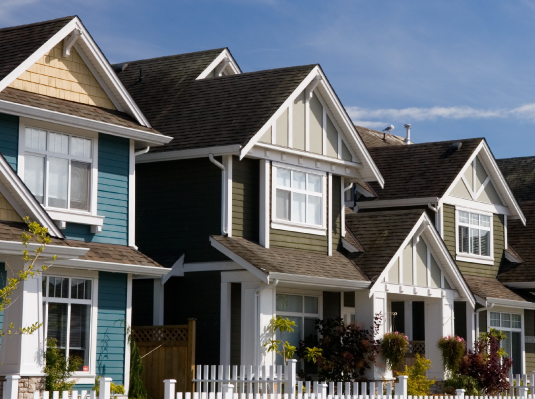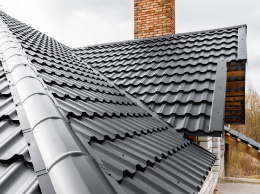
How much should home insurance cost?
Home insurance is one of the most important tools in protecting your assets. For most Americans, your home is the largest investment you will ever take on, and it is the largest asset you will ever buy. Because of this, it’s important to shop the market to find the best policy available that will protect you and your family. Of course, your focus should be on the coverage you’re buying to protect your home, but how much should your home insurance policy cost?
There is a plethora of details about your home that are factored into the total cost of your home insurance policy. When calculating what your annual home insurance premium should be, insurance companies look at things like:
-
The age of your home
-
The size of your home
-
Your home’s location (the state, city and neighborhood levels)
-
Your previous claim history
-
Your credit score (in most states)
-
And many others!
Each state is different, and so is the average price for home insurance in each state. Some states have generally higher home insurance premiums than others. This is commonly based off of natural disasters that frequently occur in some states and not others (i.e. California wildfires, hurricanes in Texas and Florida).
Why do insurance premiums increase?
Homeowners who have owned their home for an extended amount of time have probably noticed that their home insurance commonly increases year after year, but what causes insurance premiums to increase? As mentioned above, there are quite a few things that can cause your home insurance rates to increase from one year to the next. The most common causes are:
-
Your home is older! With each year that passes, your home gets older. Since that is a rating factor that home insurance companies use to calculate the risk of your home, you can expect your premium to change a little each year along with it. Older homes are more likely to have plumbing or other system failures that result in a home insurance claim.
-
You’ve filed a claim on your home. If you file a home insurance claim during your policy term (especially a large claim), you can predict that your home insurance premium will increase at your next renewal. Like the age of your home, your claims history is a rating factor home insurance companies use when calculating your home insurance premium. As the number of claims grow, so does the cost of your home insurance policy.
-
Your neighbors have been filing a lot of claims. This sounds absurd at first, but let’s look at the bigger picture. Your home insurance company doesn’t just insure your home, they probably insure many homes in your area. If your insurance company has had to pay out on a large number of recent claims in your area, they might increase all of their customers’ home insurance premiums next year to recoup some of their losses after big storms. Even if you didn’t file a claim yourself, this can still affect your home insurance rates.
-
Your coverage increases year after year! To keep up with the cost of inflation, most insurance companies slightly increase your coverage at each renewal. Usually this increase is only 2-4% per year, but this can also be a contributing factor as to why you see an increase in premium each year.
These are just a few things that can have an impact on your home insurance rates. If you notice that your home insurance premium increases at your next renewal, keep in mind that you are not stuck with one policy for life! Consumers should regularly shop their home insurance every few years to make sure they are still in the best spot for both coverage and price.
Why is my insurance more than my neighbor’s?
Contrary to the Declaration of Independence, homes are somethings that are not created equal! As mentioned above, there are a number of factors that go into calculating your home insurance rates. Keep in mind that your home may be bigger, older, nicer quality, so on and so forth in comparison to your neighbors down the street. Your policy also may have more coverage and special endorsements added to give you additional protection that your neighbors may have declined. You also may not be capturing every discount available such as discounts for an alarm system or a new roof. Depending on your state, another factor that may play into your home insurance rates are your credit and insurance scores. No policy is a cookie-cutter copy of another; each policy is specifically crafted to fit the needs of the person buying it.
What should I do if I’ve had a lapse?
If you’ve ever had a period of time where your home insurance lapsed and you went without coverage on your home, it can cause some issues for your future insurance policies. A lapse can be caused for a number of reasons, and some homeowners may choose to discontinue their home insurance in an attempt to save money each year. While this seems like a good idea in theory, it can dramatically impact how an insurance company views you as a client. If you have a mortgage on your home, the mortgage will require you to carry home insurance. Should you have a lapse in coverage, they may take the liberty of “force-placing” insurance on the home for you, which is normally much more expensive.
Similar to a credit score, each homeowner has what’s called an insurance score. Functioning very similarly to a credit score, your insurance score takes into account your insurance history and the levels of coverage you’ve carried in the past. An insured person who has always carried really high limits, has been with the same company for a long time, and has an extensive history of carrying insurance, will look incredible to insurance companies. A client who has had poor limits of coverage and has experienced a lapse in their insurance will have a lower insurance score and therefore pay more for their insurance in comparison to the “dream customer.”
The length of your lapse can also have an impact on your insurance shopping success. A lapse that lasts 30 days or less isn’t as serious in the eyes of insurance companies, but it still will impact you financially and you may have to get special permission from their underwriting team before they cover you. If you haven’t had insurance for over 90 days, this will have a much more severe penalty on your insurance. Many companies will be hesitant to insure you, and any policy you get will be a bit more pricey.
In order to get insurance on a property you’ve had a lapse on regardless of how long the lapse was, companies will commonly have you sign something called a “Statement of No Loss.” This is a form that the client signs stating they confirm no losses have occurred on the property while it was uninsured and that there is no existing damage present. If you’ve self-insured your home or currently have a lapse, call your insurance agent and discuss your options if you’re interested in getting coverage on your property again.
How does roof age affect my price?
Your roof is a huge rating factor for your home insurance in many states. Since your roof is your home’s main defense against the elements, insurance companies pay special attention to its condition. Depending on the age and quality of your roof, it can make your policy more expensive or even prevent you from getting coverage with certain home insurance companies. The main characteristics your home insurance company looks for in your roof are:
-
Age
-
Condition
-
Location, meaning is your home located in an area that is frequently hit with hailstorms or other common causes of loss
-
Type (ie. metal, asphalt, tile, etc.)
There are a variety of roof types that consumers can pick from, but each type has a direct impact on how well it protects your home from the elements, its expected lifetime, and how much it costs to rebuild or repair in the event of a claim. The main roof types are:
-
Asphalt Shingles: 15-20 years life expectancy
-
Wood Shake: Upwards of 20 years life expectancy
-
Tile: 30-50 years life expectancy
-
Metal: 30-70 years life expectancy
-
Slate: 100+ years life expectancy
These life expectancies are an estimate and can vary from state to state as some conditions are harsher and wear more on a roof. Each roof type has positives and negatives. While some offer much better protection against the elements, they can be quite pricey to repair in the event of a loss. Because of this, your insurance company will adjust your home insurance rates to make sure it accounts for those additional factors.
What does a 30-year roof do for my home insurance?
As mentioned above, your roof plays a big role in determining your home insurance rates. Many clients are excited to hear that their home has a “30-year roof” when they go through the homebuying process, but what does that actually mean? Roofers use this phrase to tell their clients they have an expected life of up to 30 years, but Mother Nature may have something else to say about that. Just because it’s a “30-year roof” doesn’t mean that a hailstorm won’t come through your area next year and cause you to need a new roof after damages. Having a brand-new roof will earn you a nice discount on your home insurance but having a 30-year roof won’t affect your home insurance. At the end of the day, the condition of your roof is the most important factor. It may be necessary to replace your roof due to its condition, despite its age, because it’s good to err on the safe side and replace the roof before a potential claim happens rather than wait too late and the damage is done to the home.
Why does the age of my home matter to my home insurance?
As another year passes, your home is considered one year older in the eyes of your insurance company. The age of your home can have a direct impact on your home insurance rates because with time comes additional risks for loss. Your home also may not be fitted with the most up-to-date materials and appliances, which could cause a loss.
The contents of this article are for informational purposes only. You should not act or refrain from acting based on this information without first consulting a Goosehead licensed agent at [email protected]. We disclaim all liability for actions taken or not taken by you based on the contents of this article which is provided "as is." Goosehead makes no representation that this content is error-free.

